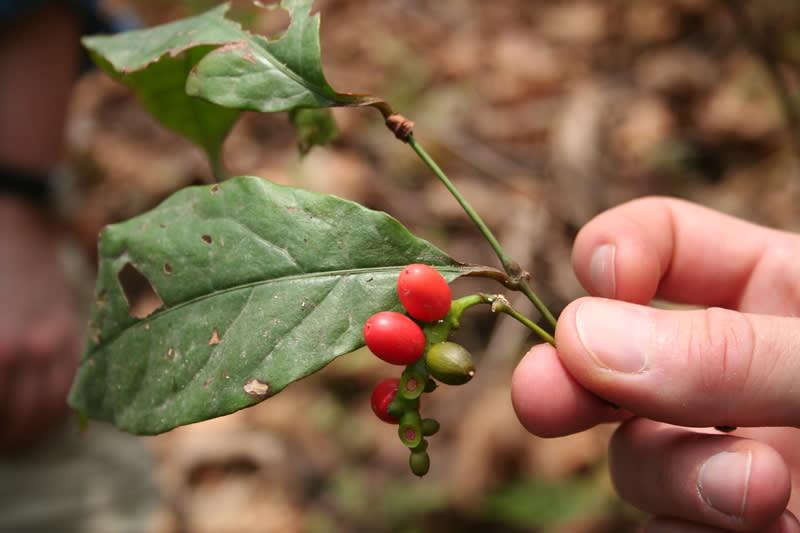
🌿 Morphology
🌞 Growing conditions
🌍 Origin and family
🌾 Uses
Warning: Despite the care taken in writing this sheet, it is essential to cross-reference sources before using or consuming any plant. When in doubt, consult a qualified professional
Permaculture uses
The leaves are a staple vegetable, high in protein, used in soups and stews. It is a dioecious vine, so both male and female plants are needed for seed production. The seeds are also edible when cooked. It can be grown as a shade plant for other crops and acts as a living fence. No specific cultivars are widely recognized, but variations exist in leaf size and growth habit.
Permapeople description
Gnetum africanum, commonly known as eru, is a leafy vine native to tropical Africa. It's a dioecious plant, meaning it has separate male and female plants. The leaves are simple, opposite, and elliptical, typically harvested for culinary use. The leaves are rich in protein and other nutrients and are an important food source in central African cuisine. It grows in humid rainforest environments.
Botanical description
Gnetum africanum is a dioecious evergreen climbing plant. The stems can grow several meters long, twining around trees or trailing along the ground. The leaves are opposite, simple, oblong-elliptic, and leathery in texture. Male plants produce slender catkin-like cones bearing pollen. Female plants produce fleshy, ovoid fruits that are initially green, turning orange-red when mature. The seeds are large and contain a fleshy aril.
Companion planting
It can be grown alongside other shade-tolerant plants like coffee or cacao. As a climbing vine, it may benefit from support from larger trees. There is limited information about specific companion planting relationships, but avoiding aggressive competitors is advisable.
Propagation methods
Propagation can be achieved through seeds, stem cuttings, or layering. Seed germination can be slow and uneven. Stem cuttings taken from semi-hardwood in spring or early summer are more reliable. Layering involves bending a stem to the ground and covering it with soil until roots develop.
History and traditions
Eru has a long history of use as a food source in Central and West Africa. It is often featured in traditional ceremonies and celebrations. Different tribes have their own methods of preparing and preserving the leaves. It is considered a valuable source of nutrients, especially in areas where protein is scarce.
Usage calendar
Leaves can be harvested year-round, but are typically more abundant during the rainy season. Flowering occurs during the dry season. Seed production depends on the presence of both male and female plants and can occur throughout the year. Cuttings are best taken in spring or early summer.
